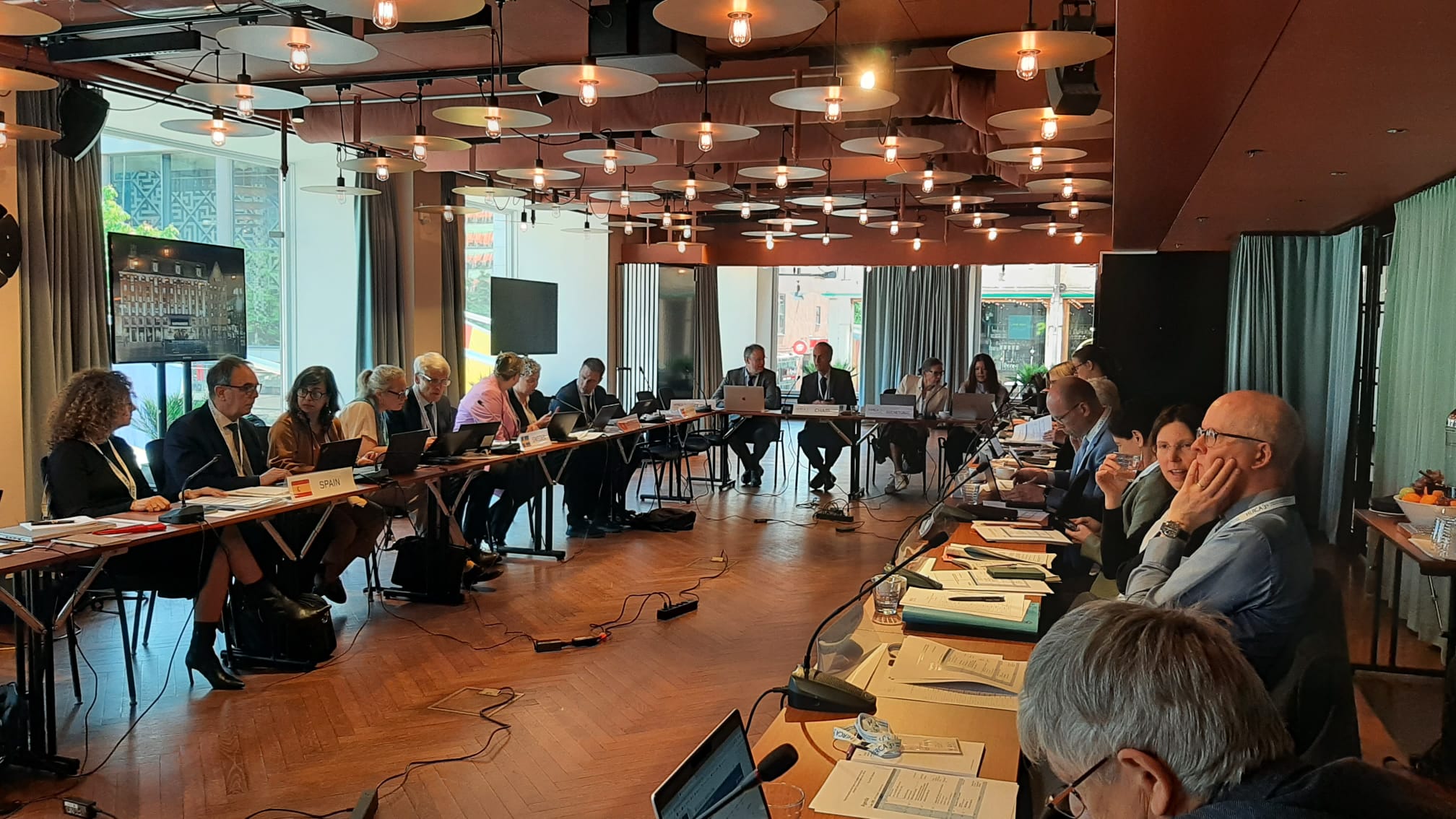Contenido principal
2023
CSN Commissioner Pilar Lucio is elected Vice-chair of the Heads of the European Radiological protection Competent Authorities (HERCA)

Commissioner of the Spanish Nuclear Safety Council (CSN), Pilar Lucio, has been elected Vice-chair of the Heads of the European Radiological protection Competent Authorities (HERCA), during the 31st meeting of its Board of Heads, held in Stockholm between June 7th and 9th. Commissioner of the French Nuclear Safety Authority (ASN), Jean-Luc Lachaume, was elected Chair for the next three years and the full direction will be completed by Patrick Majerus, from the Ministry of Health of Luxembourg. The French and Spanish regulators have a strong track of collaboration and, along with Luxembourg, will help to build a strong block in the association's leadership over the next three years, commissioner Lucio affirmed.
During the meeting -in which the CSN was represented by a delegation also headed by its technical director for Radiological Protection, Javier Zarzuela- it was agreed to hold the meeting of the organisation's Board of Heads in Spain, in the spring of 2024.
At the meeting, the activities carried out in the previous months were presented, highlighting that HERCA’s voice has a growing impact in the field of Radiation Protection. Likewise, it was pointed out that HERCA is recognisable through the products generated by its groups, adding value to its Member States and becoming an enriching forum for the exchange of knowledge.
The CSN Technical Directorate for Radiological Protection leads two groups, one related to communication strategy, which showed to the Board the progress of its activities, also indicating its commitment to the dissemination of HERCA’s actions.
The group related to Education & Training shared a document prepared after analysing how the Member States have implemented the Radiation Protection Expert and Radiation Protection Officer roles in practice, highlighting the need to seek a consensus based on the competencies assigned to these positions. 
Similarly, the Working Group on Emergencies submitted for the Board’s approval the new action plan of this group for the period 2023-2027, as well as the expanded mandate of the Ukraine Task Force. In addition, the Working Group on Natural Radiation submitted for approval a questionnaire to explore the different approaches and practical solutions that countries have adopted on the potential use of NORM waste in construction materials, and which is expected to be circulated among the countries before the end of the year.
As previous occasions, during the meeting other relevant international organisations on radiation protection participated as observers. This was the case ofInternational Atomic Energy Agency (IAEA), the European Commission and the Nuclear Energy Agency (NEA). The representatives of each organisation presented its respective activities, international cooperation projects, documents and publications in the field of Radiation Protection.
About HERCA
HERCA is a voluntary association in which the Heads of Radiation Protection Authorities work together in order to identify common issues and propose practical solutions for these issues. HERCA is working on topics generally covered by provisions of the EURATOM Treaty. The goal of HERCA is to contribute to a high level of radiological protection throughout Europe.
HERCA was created in 2007 to initiate an exchange of knowledge and experiences in order to facilitate practical and harmonised solutions to important regulatory issues in radiological protection. Although in the European Union the regulatory framework for radiological protection is limited to regulations drawn up by the European Commission, such as Regulations or Directives, the practical application of these requirements can be carried out in very different ways by each member state.
The association is composed of representatives of 56 European authorities competent in Radiological Protection, belonging to 32 European countries.
To carry out their work, working subgroups have been established to cover the radiological protection of exposed workers, the safety of radioactive sources, actions in case of emergencies, activities related to radiological protection in the medical field, both for exposed workers and patients, activities related to radiological protection in industrial facilities, and training in radiological protection.
* Check here the glossary of technical terms *
